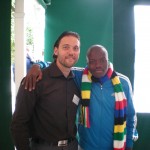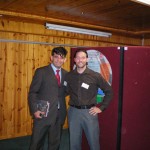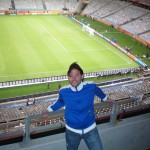RICHARD BUCCIARELLI, PRESIDENT OF SOCCER FITNESS INC., HAS RETURNED FROM THE SECOND WORLD CONFERENCE ON SCIENCE AND SOCCER IN PORT ELIZABETH, SOUTH AFRICA, JUNE 8-9, 2010.
THE CONFERENCE IS AIMED AT ACADEMICS, SPORT SCIENTISTS, TEACHERS, STUDENTS, ADMINISTRATORS AND COACHES WITH AN INTEREST IN THE SCIENTIFIC STUDY AND/OR THE PRACTICAL PERFORMANCE OF SOCCER FROM THE GRASS ROOTS TO THE PROFESSIONAL LEVELS.
RICHARD PRESENTED A STUDY, TITLED ‘SPEED AND HIGH INTENSITY RUNNING IN FEMALE SOCCER PLAYERS AT DIFFERENT LEVELS OF PLAY IN CANADA’, AT THE CONFERENCE.
CONCLUSIONS OF THE STUDY INCLUDED:
- Female players at higher levels (Provincial, National) were faster, and had better recovery between high intensity activity than lower level players (Club, Academy) in the same age category
- There were no significant differences in jumping ability between higher and lower level players, across different age categories
- Among lower level players, speed and recovery peak at the U14 age category, which may suggest inadequate training at ages beyond U14 in lower level female soccer in Canada
SUMMARY OF OTHER PRESENTERS AT THE CONFERENCE:
Dr. Barry Drust: Associate Professor, Science and Soccer, Liverpool John Moores University, Liverpool, England:
- Training youth soccer players 2x/day, every other day, 3 days per week may lead to greater physiological adaptations than training 1x/day, 6 days per week
- Position-specific fitness training, tailored to the coach’s specific requirements of play in different positions, may be an important component of senior-aged recreational and professional players
Dr. Garreth Patterson: Professor, Sport Science, Stellenbosch University, Stellenbosch, South Africa:
- “Reactive Agility” exercises and tests, where athletes do not know in advance the direction / running pattern / distance they are to travel (as opposed to “traditional” agility exercises), may be more effective in developing better agility in soccer games
Dr. Randy Wilson: Associate Professor, Department of Biology, The University of Queensland, Queensland, Australia:
- Other than technical ability, balance was the second highest predictor of performance in soccer tennis games, suggesting a greater deal of importance be placed on balance training in the physical conditioning of soccer players
Dr. Boad Homstol: Director of Neuromusculoskeletal Health and Performance, Football Association of Norway:
- A new Movement Efficiency Screening Test (“MEST”) has been developed, to assess soccer players’ abilities to execute different moment patterns which are specific to the demands of the game; this test was shown to have a moderate to high transitional value to soccer
***BE SURE TO CHECK OUT OUR MEMBER’S SECTION FOR FULL-LENGTH VERSIONS OF PRESENTATIONS FROM THE SECOND WORLD CONFERENCE ON SCIENCE AND SOCCER, PLUS MUCH MORE!***



